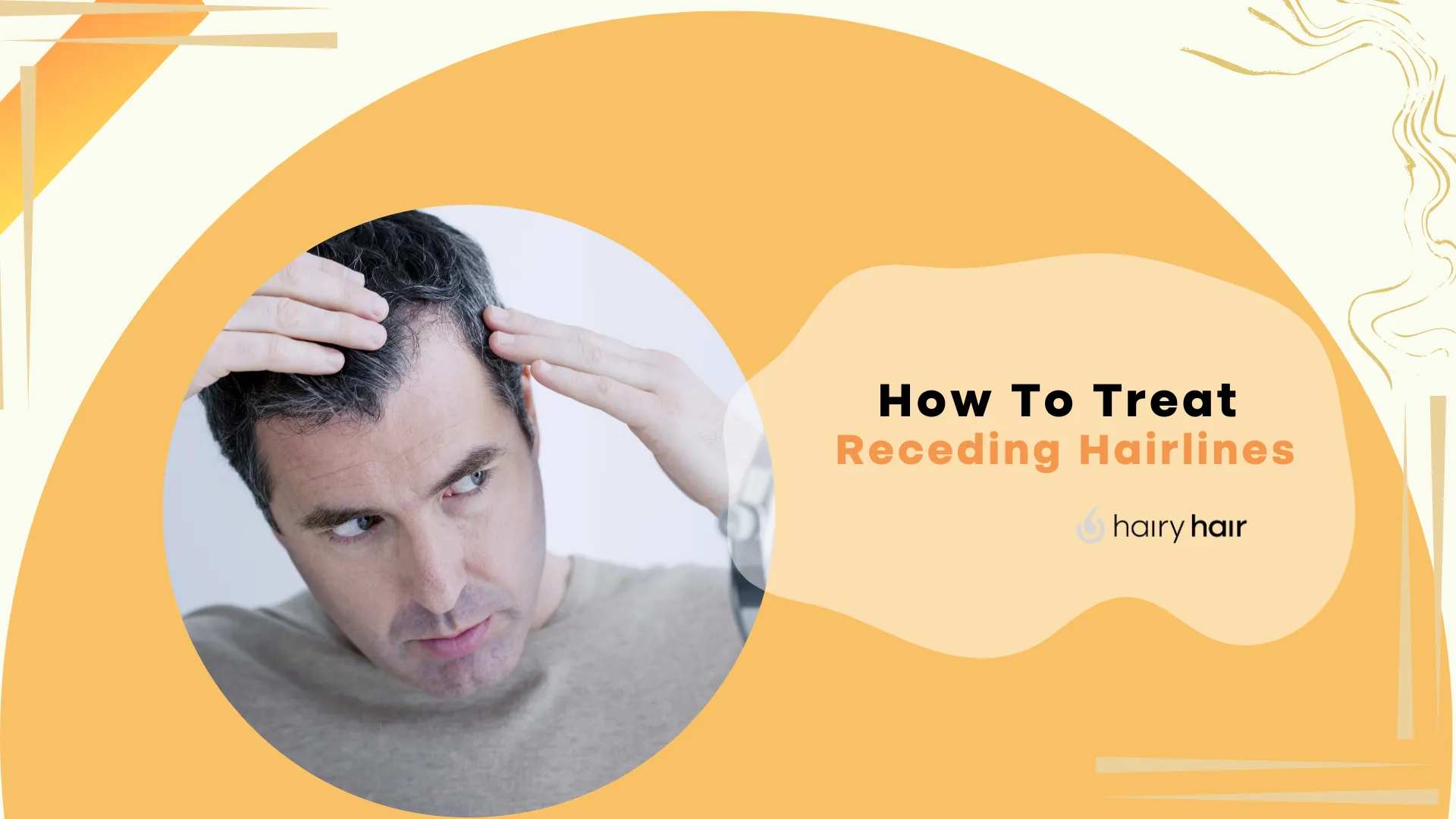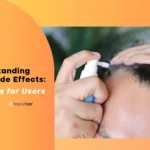How To Treat Receding Hairlines

Receding hairlines affect millions of people worldwide and can cause a significant blow to self-esteem. It is often a sign of male pattern baldness, one of the most common types of hair loss in men, although women can also experience the condition. A receding hairline grows back and away from the forehead. It spreads from the temples to the top of the head, often creating an “M” shape. Receding hairlines are generally accompanied by thinning hair and bald spots. In this article, we’ll delve into the causes of receding hairlines, explore effective treatments, and provide practical advice for managing this condition.
What Causes a Receding Hairline?
The most common cause of a receding hairline is a condition called male pattern baldness (or female pattern baldness in women), also known as androgenetic alopecia. This form of hereditary hair loss occurs as a result of genetics and male sex hormones, particularly DHT. DHT causes hair follicles to shrink, leading to progressive hair loss. Male pattern hair loss affects over 50% of men by the age of 50, and if you’ve noticed hair thinning or balding among family members, you’re more likely to experience further hair loss yourself.
Hairline recession is often one of the first signs of male pattern baldness and can signal the need for effective treatment options that provide a long-term solution to hair loss. Although, various other factors can cause a receding hairline, such as hormonal changes, tight hairstyles, certain medical treatments, nutritional deficiencies, and chronically high stress levels. If you’re unsure of what’s causing your receding hairline, it’s best to speak with a healthcare professional who can advise you on the best treatment options for your specific hair loss condition.
Signs of a Receding Hairline
A receding hairline is often one of the first noticeable signs of hair loss, and it normally starts around the temples or towards the front of the scalp. The hairline slowly moves higher over time, forming a distinct ‘M’ shape. At first, this may appear as subtle hair thinning, but eventually it becomes more obvious. Because receding hairlines are typically caused by androgenetic alopecia, they tend to get worse over time without treatment.
Some of the most common signs include:
- Thinning hair at the temples
- Bald spots
- Excessive shedding
- Noticeable scalp visibility
Early treatment can help promote hair growth and reduce thinning, so understanding the signs and symptoms of a receding hairline can help individuals take proactive steps to mitigate or stop hair loss before it worsens.
Treatment Options for Receding Hairlines
Several treatment options are available for a receding hairline, ranging from non-invasive treatments and medications to surgical procedures. You should consult with a healthcare professional who can determine the best hair loss treatments for your needs. Here are the most common options:
Minoxidil
Minoxidil is a popular topical solution that can effectively slow down hair loss. It can be purchased over the counter as a foam or liquid. Applied directly to the scalp, it increases blood flow and stimulates hair follicles to promote hair growth. Consistent use of minoxidil is required to achieve noticeable results, and it may take several months to see real improvement. Minoxidil can often be used alongside other treatment options, such as natural essential oils and scalp massages to boost efficacy. Numerous previous studies have highlighted the efficacy of minoxidil for male pattern hair loss [2], [3], [4], which makes it a suitable treatment option for a receding hairline.
Finasteride
Finasteride is an oral medication that inhibits DHT, a hormone linked to hair thinning and balding. By reducing DHT levels, Finasteride can stop hair loss in its tracks and even support new hair growth. It’s generally used for male pattern baldness and you’ll require a prescription from a doctor. Finasteride has proven effective in clinical trials. For instance, Georgetown Medical Review conducted a review in 2023 and found that over 2 years, daily finasteride treatment slowed the progression of hair loss and increased hair growth in men with androgenetic alopecia.
Hair Transplant Surgery
If you’re searching for more permanent results, hair transplant surgery may be the best option for a significantly receding hairline. Hair transplants involve removing healthy hair follicles from one part of the scalp and transplanting them into areas with thinning or balding. Hair transplant surgery offers long-term, natural-looking results, but it can be invasive and expensive depending on the number of hair grafts needed and the type of surgery.
Platelet-Rich Plasma (PRP) Therapy
Platelet-rich plasma (PRP) therapy is a hair loss treatment that uses the patient’s own blood to stimulate hair growth. Blood is drawn from the patient, processed to concentrate the platelets, then re-injected into the scalp. The platelets contain growth factors that promote hair follicle regeneration. PRP therapy can improve hair density and it’s often used alongside other treatments to optimise results.
Low-Level Laser Therapy (LLLT)
Laser therapy uses low-level laser devices to stimulate hair follicles and encourage hair regrowth. Light energy is applied to the scalp which can help increase blood flow to hair follicles. Laser therapy is often used as a supplementary treatment to other options as it can enhance the effectiveness medications. Regular sessions and consistent commitment are required to achieve the best results from LLLT.
Long-Term Hair Loss Treatments
Many of the treatment options we’ve mentioned require quite a lot of time, effort, and money to increase their effectiveness. If you’re looking for a long-term solution that is convenient, affordable, and private – treatment plans like Hairy Hair are the ideal choice. With a Hairy Hair subscription, you’ll receive one daily pill, packed with clinically proven ingredients to manage thinning and encourage healthy hair growth. You don’t need to visit a GP or hair loss clinic – everything at Hairy Hair is done online. All you need to do is sign up, fill out a medical questionnaire, and your clinically proven treatment will be delivered straight to your door. Choose Hairy Hair for a hassle-free way to treat a receding hairline, all from the comfort of your home.
Can Natural Remedies Help a Receding Hairline?
Natural or herbal remedies are often used to treat a receding hairline. Popular remedies include essential oils like rosemary, peppermint, and lavender, which are believed to boost circulation to the scalp and promote hair growth. Although natural remedies are not guaranteed to effectively treat a receding hairline, they may provide benefits for certain people. The scalp nourishment from massaging with essential oils provides the optimal environment for hair growth and can prevent further thinning. Many people also find that using natural remedies in conjunction with the treatments mentioned above can improve overall efficiency.
Final Thoughts
A receding hairline can be stressful, but with the right treatment, it’s possible to slow down hair loss and experience regrowth. Choosing the right treatment for you depends on your individual needs, preferences, and the type and severity of hair loss. Talking to a healthcare professional can help you understand the specific cause of your receding hairline and come up with an appropriate treatment plan. Early interventions and a commitment to consistent care are important for managing a receding hairline and maintaining fuller, thicker hair.
In This Article
Overview
Most Trending Articles


